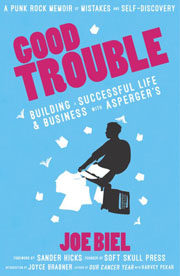Unearthing the East Bay’s Hidden Rock History: An interview with Cory M. Linstrum
 We’re stoked to announce the official publication of
We’re stoked to announce the official publication of
the second volume in our Scene History series, Cory M. Linstrum’s The Rock & Roll of San Francisco’s East Bay, 1950-1980. Before the Lookout Records revolution put the Bay Area on the map for current generations, the East Bay was home to a thriving, influential, and diverse rock and punk scene. This little zine packs a whole lot of fascinating history for anyone curious about the roots of the music they’ve always loved, or about SF area history generally. It comes out March 15th, and Cory answered some questions for us over email.
1. Why did you write the Rock & Roll of SF’s East Bay scene history?
It was originally inspired by Joel Selvin’s book, San Francisco: The Musical History Tour. For anyone that hasn’t seen this, it’s like a tourist guidebook of locations specific to Bay Area rock ‘n’ roll: i.e. the sites of now-shuttered infamous nightclubs, historically significant recording studios, sites of a drug busts involving famous musicians, etc. Despite Selvin’s target audience being baby-boomers, it goes much deeper than your average Dead/Airplane/Quicksilver trivia. It’s not only San Francisco locations, either. It includes spots here in the East Bay: the house Metallica lived in before becoming world-famous, CCR’s “Cosmo’s Factory” rehearsal space, the vacant lot (now baseball field) that had a house Jimi Hendrix once lived in as a boy.
It’s a fun book that I always thought would be rad if someone did an all-punk rock version of, in a sloppy fanzine format. I considered it myself, but, instead of the subject of significant locations, I settled on writing about my favorite local bands of multiple genres, operating in multiple decades, and the local record labels that released their music.
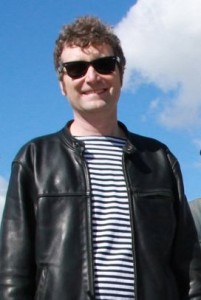 The Rock & Roll of SF’s East Bay was actually written in entirety before I learned of Microcosm’s scene history series. It began as a series of essays, one for each decade: 50s/60s/70s, that I intended to self-publish one segment at a time, in issues of the fanzine I edit, Savage Damage Digest. However, I ran out of space before I could even fit in the first installment. Then I got hip to Microcosm’s open call for submissions, which was exactly what I needed!
The Rock & Roll of SF’s East Bay was actually written in entirety before I learned of Microcosm’s scene history series. It began as a series of essays, one for each decade: 50s/60s/70s, that I intended to self-publish one segment at a time, in issues of the fanzine I edit, Savage Damage Digest. However, I ran out of space before I could even fit in the first installment. Then I got hip to Microcosm’s open call for submissions, which was exactly what I needed!
2. What’s the most amazing/compelling/strange thing you learned while researching and writing it? What’s your favorite band or album from that era?
One of the coolest things was learning the street addresses and approximate locations of some of these extinct recording studios and nightclubs. In hadn’t realized their proximity and closeness to places I casually pass by in my everyday routine. It’s pretty neat going down Alcatraz Avenue, along the Berkeley/Oakland border, knowing that such and such record was recorded in a specific building. Or passing through the intersection of Milvia Street and San Pablo Avenue, visualizing that our Good Vibrations location was once the original Longbranch Saloon! Of course this is expected in places like Los Angeles or New York City, cities known as entertainment hubs, but it’s pretty cool for little ol’ Berkeley.
Since the advance and mail order copies of my Rock & Roll of SF’s East Bay have been circulating I’ve had some pleasant surprises: an invitation extended to me by a well-respected music historian and producer, to come by and peruse his archives and hear unreleased material by some of the bands I’ve written about. I was also thrilled to learn various members of the Jars, a Berkeley new-wave/punk group written about in the chapter on the 70s, had each been given copies to read—and enjoyed it. The band’s original vocalist, J.D. Buhl (who isn’t actually on either of the Jars records), contacted me. He made me aware of an entire alternate pre-history of this band. Now I’m privy to information I found nothing on during my research. It was a great surprise. We’ve since sat down together for an interview and I’ve heard the bands earliest, unreleased demos—which sound like an amazing merger of the Archies and the New York Dolls!
Besides these punky-poppy, practically unheard, early Jars recordings, I’d have to say my favorite Berkeley punk record is “Back To Bataan”, the 1979 single by the Maids. It’s probably the gnarliest sounding record to come out of the East Bay’s original punk wave of the late seventies. Anyone listening to the Killed By Death bootleg record series knows this one. Curiously, as the Maids only made two live appearances during its brief lifetime, most of the local musicians active on this late-seventies circuit don’t remember them.
3. Tell us more about you! What do you write / do / play / think about most?
It’s always been about music, music, music. I listen to it non-stop, write about it, play it live, talk about it and dream about it—always have. I was the kid in 7th grade with a Hit Parader, Creem or Circus Magazine behind his history book. The first underground fanzine I discovered, back in ’83-’84, was Metal Rendezvous. Soon after that I discovered punk rock and a whole new world of fanzines opened up for me. I did various fanzines of my own in high school, then none for many years—I just read ‘em and took mental notes.
I started writing and publishing again in 2010 with Savage Damage Digest. Its release schedule is inconsistent. With my “whenever-I-feel-like-it” attitude, I’m only four issues deep. Still, I keep busy. I just came off a ripping project that I’m really proud of: The Subtractions, a band from California’s Central Valley that existed ‘79/’80. I tracked them down and began interviewing its members for a story with Savage Damage Digest. In the process I discovered a set of tapes the band had recorded in 1980. I got ahold of them, listened to them, was blown away, restored them, transferred them, found a record deal and had an overall great time curating them for release with HoZac Records’ Archival Series (needless to say the band was thrilled and has since done a successful reunion show).
Of course I’m also an avid reader and fan of film, as well as into skateboarding and electric guitars. My wife and I love to travel. We never hesitate to drag our kids onto an airplane or load them into the back seat of our car. I’ve also done bands off and on for the last 25 or so years. I’m currently doing one, but wouldn’t hesitate to bail out when the dive bars and personality clashes become an agonizing grind (call me non-dedicated).
 4. What’s your next project that you’re most excited about?
4. What’s your next project that you’re most excited about?
At the moment I’ve got a story coming out in Ugly Things #41. It’s a short piece on 6IX, a mostly unknown band that released one Sly Stone-produced single in 1970. Following that is an interview with Boston punk band Unnatural Axe for the next issue of Human Being Lawnmower. I’m hoping to see both of these on the printed page very, very soon. Currently I’m wrapping an interview with (the previously mentioned) J.D. Buhl. He’s done a handful of cool releases, but his 1981 single, “Do Ya Blame Me,” is an awesome side of local poppy-new wave-punk. Sitting down and interviewing him was great fun and he opened a lot of doors for me regarding various local bands I’d only heard of, as they’d never released anything. This gave me some great reference points on these groups. My long term goal is to keep interviewing local musicians and writing about Bay Area punk rock.
Check out our Scene History series zines + call for submissions here, and Cory’s new zine here!






 Last month I was invited to speak on a panel about the arts. I agreed and a month later I received another email, explaining that a woman panelist had canceled and had been replaced with a man. The curator was concerned that having a panel with four men and only one woman might appear to have a lack of diversity. It’s certainly an important thing to consider when putting on a public event. The recent social justice movements around race and gender have gotten gears grinding in people’s heads. At the same time numerous people have expressed to me just how patronizing it feels when the stated reason for sending them an invitation is because of their race or gender, rather than the merit of their work or just how brilliant they are in the first place.
Last month I was invited to speak on a panel about the arts. I agreed and a month later I received another email, explaining that a woman panelist had canceled and had been replaced with a man. The curator was concerned that having a panel with four men and only one woman might appear to have a lack of diversity. It’s certainly an important thing to consider when putting on a public event. The recent social justice movements around race and gender have gotten gears grinding in people’s heads. At the same time numerous people have expressed to me just how patronizing it feels when the stated reason for sending them an invitation is because of their race or gender, rather than the merit of their work or just how brilliant they are in the first place.  About six years ago, after much confusion and disagreement about how to decide what Microcosm should publish, I created a set of guidelines for institutional memory in our staff manual.
About six years ago, after much confusion and disagreement about how to decide what Microcosm should publish, I created a set of guidelines for institutional memory in our staff manual.


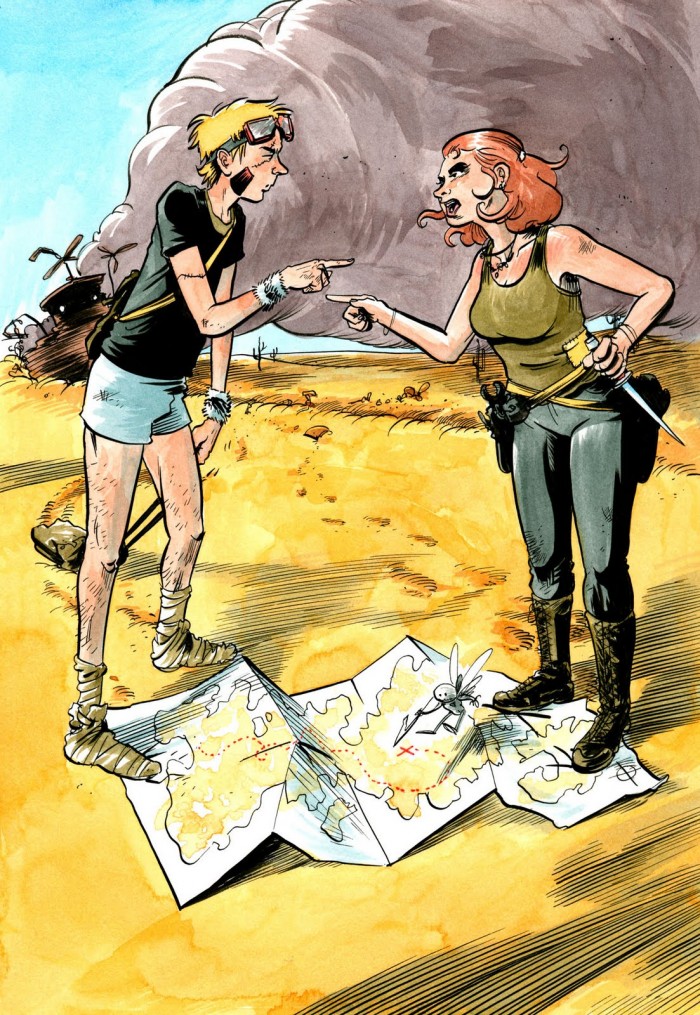
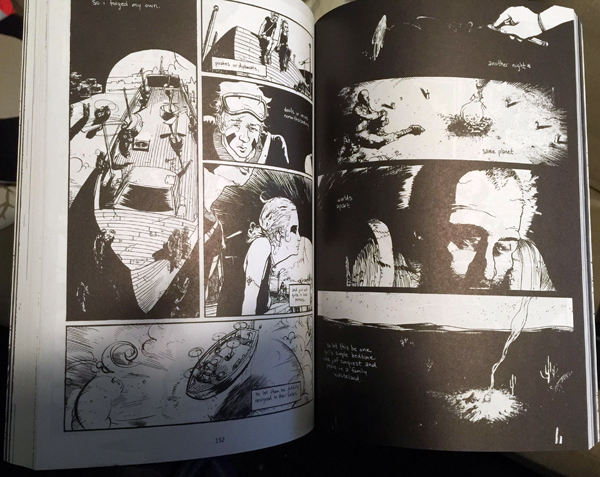



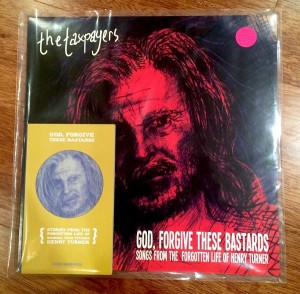
 One day I received a phone call from Meadow Shadowhawk, a Native American woman who explained that she had a children’s book about a gigantic bird that lives in their suburban home that was seeking a publisher. I explained how our submission process worked and that we don’t publish children’s books. A few days later she called again, explaining a bit more about her family and her son and the awards that he had won, including one from Dr. Jane Goodall. Meadow explained that Dr. Jane would be willing to contribute a foreword.
One day I received a phone call from Meadow Shadowhawk, a Native American woman who explained that she had a children’s book about a gigantic bird that lives in their suburban home that was seeking a publisher. I explained how our submission process worked and that we don’t publish children’s books. A few days later she called again, explaining a bit more about her family and her son and the awards that he had won, including one from Dr. Jane Goodall. Meadow explained that Dr. Jane would be willing to contribute a foreword.  By the time I returned to Portland, with even more photos of the rhea, Amica, in my inbox, I realized what bugged me about an illustrated children’s book: It would be lost in the end matter that the story was real. I decided that it would make a lot of sense to do a photo book of Amica because he is quite idyllic and the story was so interesting and unusual. The family and Dr. Jane agreed and a near-miss was
By the time I returned to Portland, with even more photos of the rhea, Amica, in my inbox, I realized what bugged me about an illustrated children’s book: It would be lost in the end matter that the story was real. I decided that it would make a lot of sense to do a photo book of Amica because he is quite idyllic and the story was so interesting and unusual. The family and Dr. Jane agreed and a near-miss was 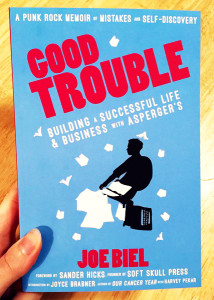
 Thank you. I would like to believe that I’m cautious about everything but most of the rest of the staff would probably disagree. In prehistoric times, a memoir was simply a story. If we’re using marketing terms, a memoir could simply be a nonfiction novel. But a novel has a narrative, characters, plot, a theme, and an arc. Many writers don’t engage the reader as a stakeholder in their writing and many of the memoirs that are submitted to us are expected to be published on the grounds that they have been written. For a memoir to work, it needs to have all of those components and have a clear concept of what it is, who it is for, and how it is different from the pack. My book is for would-be publishers, adult autistics, Microcosm fans, and people who want to start businesses. There needs to be at least 5,000 of these people out there and we need to know how to reach them. I am too close to the work to tell you if mine succeeds but thankfully everyone who I have heard from so far has enjoyed it immensely so I am thankful that I have good editors and that I put so many hours into it.
Thank you. I would like to believe that I’m cautious about everything but most of the rest of the staff would probably disagree. In prehistoric times, a memoir was simply a story. If we’re using marketing terms, a memoir could simply be a nonfiction novel. But a novel has a narrative, characters, plot, a theme, and an arc. Many writers don’t engage the reader as a stakeholder in their writing and many of the memoirs that are submitted to us are expected to be published on the grounds that they have been written. For a memoir to work, it needs to have all of those components and have a clear concept of what it is, who it is for, and how it is different from the pack. My book is for would-be publishers, adult autistics, Microcosm fans, and people who want to start businesses. There needs to be at least 5,000 of these people out there and we need to know how to reach them. I am too close to the work to tell you if mine succeeds but thankfully everyone who I have heard from so far has enjoyed it immensely so I am thankful that I have good editors and that I put so many hours into it.




